Photographing Children; Interaction At Eye Level
Candid Shots
When photographing very young children, for example, I will ask them to do things that will almost guarantee wonderful facial expressions. I photographed my niece, Jamie (#1), when she was five years old by asking her to hold on to exercise rings in a park. Her little hands couldn’t quite support her weight, so as she was slipping she was cracking up. Some kids might be afraid in this situation, but I knew her personality and I got the expression I was looking for. Shortly after this, she had an ice cream cone and, knowing that my dog would eat virtually anything, I asked Jamie to hold it out for Buddy to lick. She did, and I got another wonderful candid and joyous expression (#2).

All Photos © 2009, Jim Zuckerman, All Rights Reserved
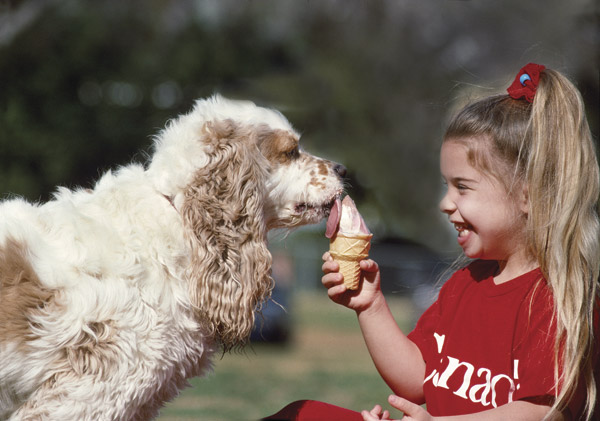
Lots of small children love being thrown in the air, and this is another great way to elicit expressions of joy. The little girl in photo (#3) was having a great time playing with her father, and every time she went airborne I captured a great moment. The overcast sky made the background completely unobtrusive so nothing detracted from the girl. I took the shot when she reached the highest point of the throw, because at this point she had reversed direction and was virtually motionless. This minimized the risk of blur.
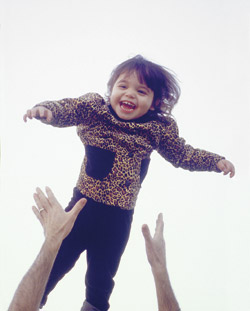
Sometimes just putting young friends together works. Their natural inclination is to giggle, pout, or otherwise be engaged with each other. There are many wonderful images to be taken if you are ready, such as photos (#4 and #5).
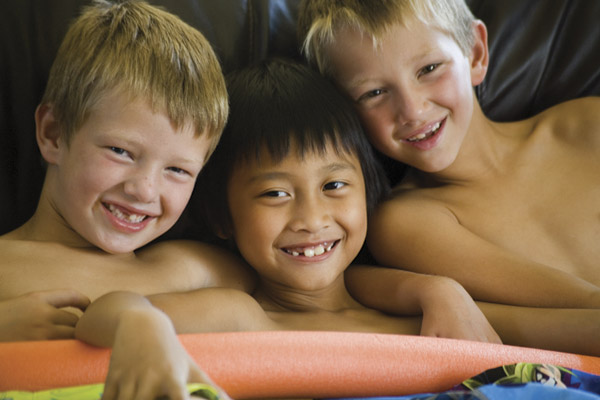
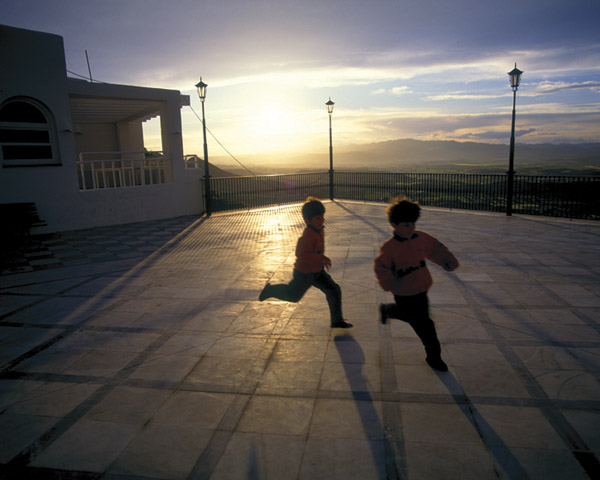
Sometimes we are lucky to be in the right time and the right place to get a spontaneous shot, and we just happen to have a camera in our hands. Such was the case when I photographed a young girl in a Christmas parade in Puerto Rico (#6).

Eye-Level Shooting
A simple technique to make pictures of children more intimate and more compelling is to shoot at eye level. Don’t stand at an adult height and shoot down on them. This can work once in a while if you specifically want to suggest how small and vulnerable a small child is, such as in photo (#7). The same little girl taken from ground level (because she was sitting on the grass) in photo (#8) is more intimate and it implies a closer connection between the photographer and the subject.
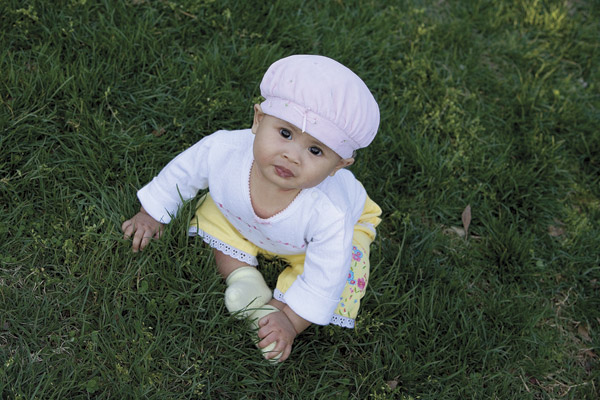
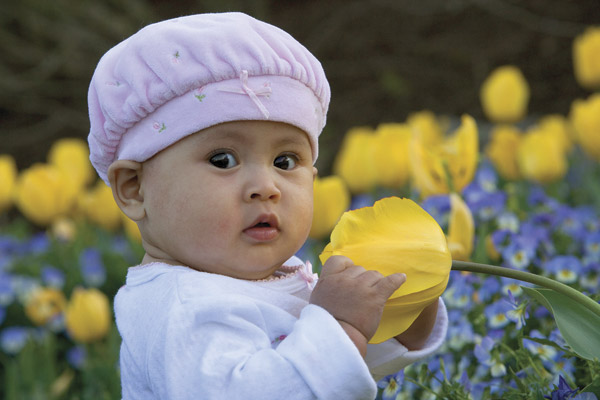
The same is true for the kids in photos (#9, #10, and #11). These were taken from different parts of the world (Tennessee, India, and Turkey, respectively), but they all have the same thing in common. They were taken from eye-level with a medium telephoto lens. The telephoto lens produces a sense of compression which is good for flattening the nose and making the background out of focus, and it also allows you to easily fill the frame with the subject without being in their face with your camera. By shooting from several feet away, the child won’t feel like his or her space is being invaded and therefore you’ll be able to capture a more relaxed and natural portrait.
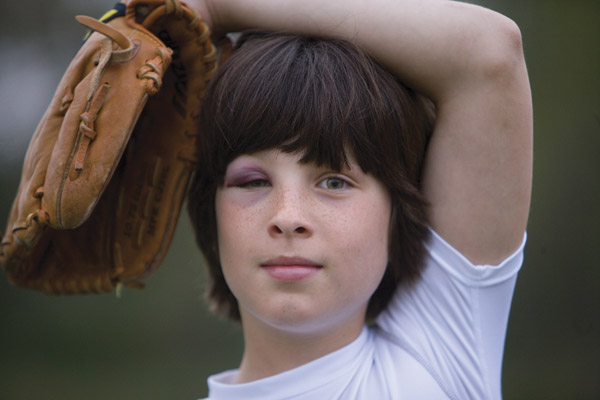

Backgrounds
If you want the background to complement the child as opposed to being distracting and competing for attention, it should be one of the following:
1. Completely out of focus.
2. Dark or black.
3. Solid white.
4. Environmental.
An out of focus background is ideal for outdoor portraits, and you can never go wrong with soft foliage. Photos (#12 and #13) are good examples. Make sure that the vegetation is so out of focus that it appears as a complete blur, however. As soon as it comes into focus and is therefore more defined, it starts to take attention away from the subject. You can force the background to be completely abstracted by using a telephoto lens and by positioning the child far enough away from the background. For example, if your subject is standing 2 ft in front of a bush, you won’t get the kind of soft background that works. If the child is, say, 15 ft in front of the bush and you use a long lens, the foliage will lose definition and it will be completely blurred.


Photo (#14) is a good example of how a dark or black background forces all the attention on the subject. When in doubt about what background to use, black is a good choice. It is virtually always complementary.

A white background can come from an overcast sky or fog if you are using natural lighting. Photo (#15) was taken on Venice Beach in Los Angeles on a foggy day typical of June weather in Southern California, and not only was the soft lighting ideal for outdoor portraiture, but the background was clean and non-distracting.
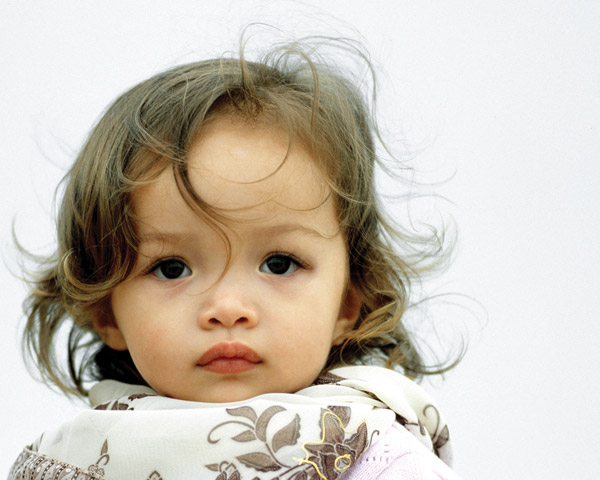
Environmental backgrounds tell a story. This kind of picture is actually more challenging because you have two major elements to deal with—the foreground subject and the background. Photo (#16) is an example of what I’m talking about. This was done with a wide angle lens so I could encompass the landscape and maintain focus on it. I added the reflection in Photoshop using the plug-in Flood (www.flamingpear.com) to make this a little more interesting.

The Eyes Have It
As with all photographs of people, it’s crucial to focus on the eyes. Because we like to move in close and fill the frame with a child’s face, be aware that depth of field is reduced the closer you get to the subject. This means that you can be focused on one eye while the other one is soft, or you can get both eyes in focus but lose the nose. Since out of focus foregrounds are usually undesirable, having the face sharp but the tip of the nose out of focus isn’t good. It’s visually annoying.
When shooting a close-up of a child, then, I would recommend that you use a lens aperture of f/8 or smaller. If the light level is low, such as in deep shade, you should use a tripod rather than raising the ISO to the point where too much noise is introduced. If you don’t have a tripod handy, then the only option is to raise the ISO until your shutter speed is fast enough for a sharp picture and the lens aperture is small enough to get the important features of the face in focus.
If the child’s head is angled to the camera and one eye is closer to the lens than the other, you will probably not be able to get both eyes in focus. In that case, the correct approach is to focus on the eye closest to the camera. If you are shooting two kids and your depth of field is relatively shallow, make sure both of them are on the same plane. In other words, they need to be equidistant to the lens. That will help you maintain depth of field on both kids very easily.
- Log in or register to post comments












































